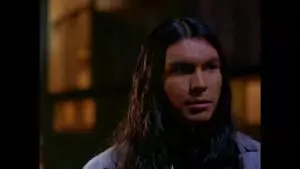Creating an erotic melodrama movie is an extremely delicate matter. There is a thin line between erotics and vulgarity, and an even thinner divide between a touching dramatic story and a cliched nagging for attention. The history of cinematography knows examples of both: there are “R” rated movies that should be ignored, and there are masterpieces that make you want to rewatch them over and over again. The example of the former is “Fifty Shades of Grey,” filmed after the novel of the same name by E.L. James, a British author who wrote a fan-fiction story based on “Twilight,” and all of the sudden it became popular, even though the plot, characters, the dramaturgy of erotic scenes, and the manner of writing in general were mediocre; the example of the latter—a brilliantly-staged melodrama—is “Wild Orchid” with Mickey Rourke and Jacqueline Bisset, filmed in 1989. Being in all aspects superior to “Fifty Shades of Grey,” “Wild Orchid” shares a number of plot twists and details with it, and it is doubtful that it is a coincidence, given that “Fifty Shades of Grey” was written and filmed much later.

✅ AI Essay Writer ✅ AI Detector ✅ Plagchecker ✅ Paraphraser
✅ Summarizer ✅ Citation Generator
Anyways, in this review, we are going to talk about the screen adaptation of E.L. James’ novel called “Fifty Shades Darker,” which is the sequel of “Fifty Shades of Grey.” The movie director is different for this second installation—instead of Sam Taylor-Johnson, who directed the first movie, the second one was directed by James Foley. The cast is the same, though: Dakota Johnson acting as Anastasia, Jamie Dornan acting as Christian Grey, and the rest of the characters you will forget as soon as the movie ends. The story itself is a direct continuation of the first movie’s plot: Christian and Anastasia part ways, and now are trying to establish their lives.
“Fifty Shades Darker” starts with Christian’s nightmare: he sees himself as a little boy, chased and abused by his father, and this scene is in no way useful for disclosing his character: we just know that his dad was a jerk—that is it. After this, we see Anastasia, who is now working at a publishing house specializing in fiction novels. Anastasia’s new boss, Jack, seems to like her, but she prefers to not notice this. Her friend Jose invites her to his exhibition of photography, and there Anastasia sees that a number of photos are her portraits (and this is unexpected, but also does not mean anything: the movie does not explain Jose’s motives to photograph just her. Is he in love with her? Is he a creep? Could not he find a different model? We do not know). This entire scene with the exhibition serves one goal: to show how Christian is still obsessed with Anastasia. Yes, he is there, and he has bought all of the pictures, driven by a weird motive to not let anyone but him look at Anastasia’s face (as if she never leaves home). Christian then invites Anastasia for dinner, intending to apologize for the past—which is strange, considering that his character is positioned as a dominant male, alien to any kind of romance, regrets, and so on. She agrees, and during the dinner, Christian does an even stranger (for a dominant male) thing—he offers Anastasia to restore their relationship on her conditions. She agrees, and they have sex.
A bit later, Jack invites Anastasia to have a drink in the bar, and whom do you think they meet there? Right, Christian. He tells Jack he is her boyfriend and takes Anastasia away. If you think it will somehow lead to a conflict of two men struggling for a woman’s attention, you are wrong.
During the course of the film, Anastasia meets a strange woman, who seems to know her, but claims that she just mistook her for someone else. Later, when Anastasia sees this woman’s photo in Christian’s apartment (why would he keep it if he is in love with Anastasia?), he explains that this is his ex-girlfriend who had married another man, who then died, and now he is having a nervous breakdown. How the hell does he know all this? Well, he has got a file on her. Anastasia suspects he has also got a file on herself, and she is right. As if she already has not figured out what kind of man Christian is, Anastasia leaves his apartment in shock, and does not speak to him for a couple of days.
And once again, this changes nothing, because later Christian invites Anastasia to a charity ball, she agrees, they meet Elena, who is Christian’s current business partner, former sex partner, and the person responsible for Christian becoming a BDSM adept (at least, an adept of the version of sex E.L. James’ believes is BDSM). Anyways, after a minuscule and meaningless conflict between Anastasia and Elena, the lovers have sex, go home, and discover that someone has spilled paint on Anastasia’s car—supposedly Leyla, the woman with the nervous breakdown, mentioned before.
The rest of the plot is as dull and pointless as the parts described above. Jack, Anastasia’s boss, tries to rape her, she reports it to Christian, who fires Jack using his connections in the publishing house. Correct me if I am wrong, but this is what is called deus ex machina, right? And who even cares about Jack? This is just some guy with a tiny bit of screen time, so neither his harassment attempt, nor his dismissal means anything. If he was an old friend of Anastasia’s who fell in deep and hopeless love with her a long time ago, and felt jealous about her being Christian’s girlfriend, and tried to make Anastasia love him, and his rape attempt was an act of desperation—well, in this case, I think I would be somehow touched by this plot detail. However, Jack is akin to a paper-mache doll whose only justification for appearing in the movie is to give Anastasia a job and show how cool Christian is. By the way, after firing Jack, Christian makes Anastasia the new head of the publishing house. Corruption in action.
Leyla, the hysterical ex-lover of Christian, makes an attempt to kill Anastasia, but Christian is there once again. Supposedly, he has a special wristwatch telling him when it is time to save Anastasia, or I do not know how else it works. Oh, I forgot that Christian is a stalker—remember him buying out all of Anastasia’s photos, or profiling his exes? I guess he peeps on her on every convenient occasion, ignoring the fact that he is a successful millionaire running a serious business. And again, if you intend to show the transformation of a creepy dominant man into a more or less normal caring individual, you should have let Leyla shoot Anastasia—just not to death. Anastasia would then get into a hospital, and Christian would bring her flowers, and oranges, and cry by her bed all night long, and tell her how much he loves her. But no, nothing can stand in the way of their love, so the would-be dramatic scenes ends with nothing, as always in this film.
Christian offers Anastasia to move to his place, gets her acquainted with his parents, and proposes marriage to her. After another insignificant event (it is just Christian getting in an accident. He does not suffer any injuries, so it does not count, so I do not know why I have mentioned it), Anastasia accepts his proposal, the end. Finally.
Things in this movie just happen and lead nowhere, so that nothing stands in the way of the main characters’ romance train. Or, the train of their romance breaks through all the misfortunes… or, there is just the train of their romance that nothing can stop… well, you got the point. The whole universe of the “Fifty Shades Darker” (as well as of the “Fifty Shades of Grey”) revolves around the main protagonists, completely adjusting to their actions, and not being able to affect their behaviors or welfare in any way. Rape attempt? Unsuccessful. Murder attempt? Unsuccessful. Spoiled car? So what. Car accident? Whatever. Conflicts with former girlfriends? Who cares. This is the only way the movie solves conflicts: just ignores the consequences.
And let us not forget that “Fifty Shades Darker” is an erotic melodrama, with the declared BDSM peppercorn. What do we see in the movie? Well, something dull. Let us be clear: “Wild Orchid” is an erotic melodrama, full of tension and intrigue to such an extent that no “peppercorns” are required to make you watch it until the end, sitting on the edge of your chair; “Fifty Shades Darker,” in its turn, is a movie about a man and a women, who talk and sometimes have sex.
This is not to mention the acting, costumes, and numerous flubs. For example, before the scene where Christian and Anastasia have sex during (or before, or after, I don’t remember, and it does not matter) the charity ball, she has one set of underwear, whereas during sex, she has another one. I guess she carries around a pack of garments. Anastasia’s hair must be super-greasy, or I don’t know how else to explain that after walking under rain, her hair remains dry. Disappearing details of wardrobes, text messages that change on their own, and other flaws, combined with boring sex scenes, an inarticulate and sometimes illogical plot, and cardboard characters make “Fifty Shades Darker” a mediocre movie, which is not worth its age rating. I bet teenagers of 15-16 years nowadays know more about sex than Christian Grey, Anastasia, E.L. James, and the movie’s director combined together, so the fact that “Fifty Shades Darker” is not recommended to audiences under 18 years old seems ridiculous.
If you want to have a good laugh, gather your friends and turn on “Fifty Shades Darker”: I guarantee you will feel like experienced film critics while watching this. Other than this, there are no excuses for watching the movie.
Follow us on Reddit for more insights and updates.




Comments (0)
Welcome to A*Help comments!
We’re all about debate and discussion at A*Help.
We value the diverse opinions of users, so you may find points of view that you don’t agree with. And that’s cool. However, there are certain things we’re not OK with: attempts to manipulate our data in any way, for example, or the posting of discriminative, offensive, hateful, or disparaging material.